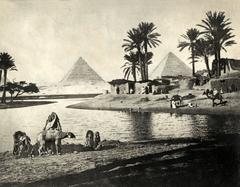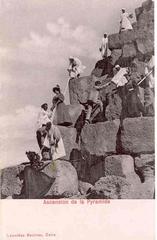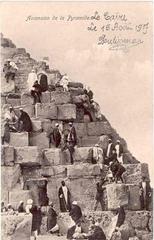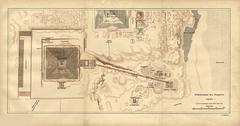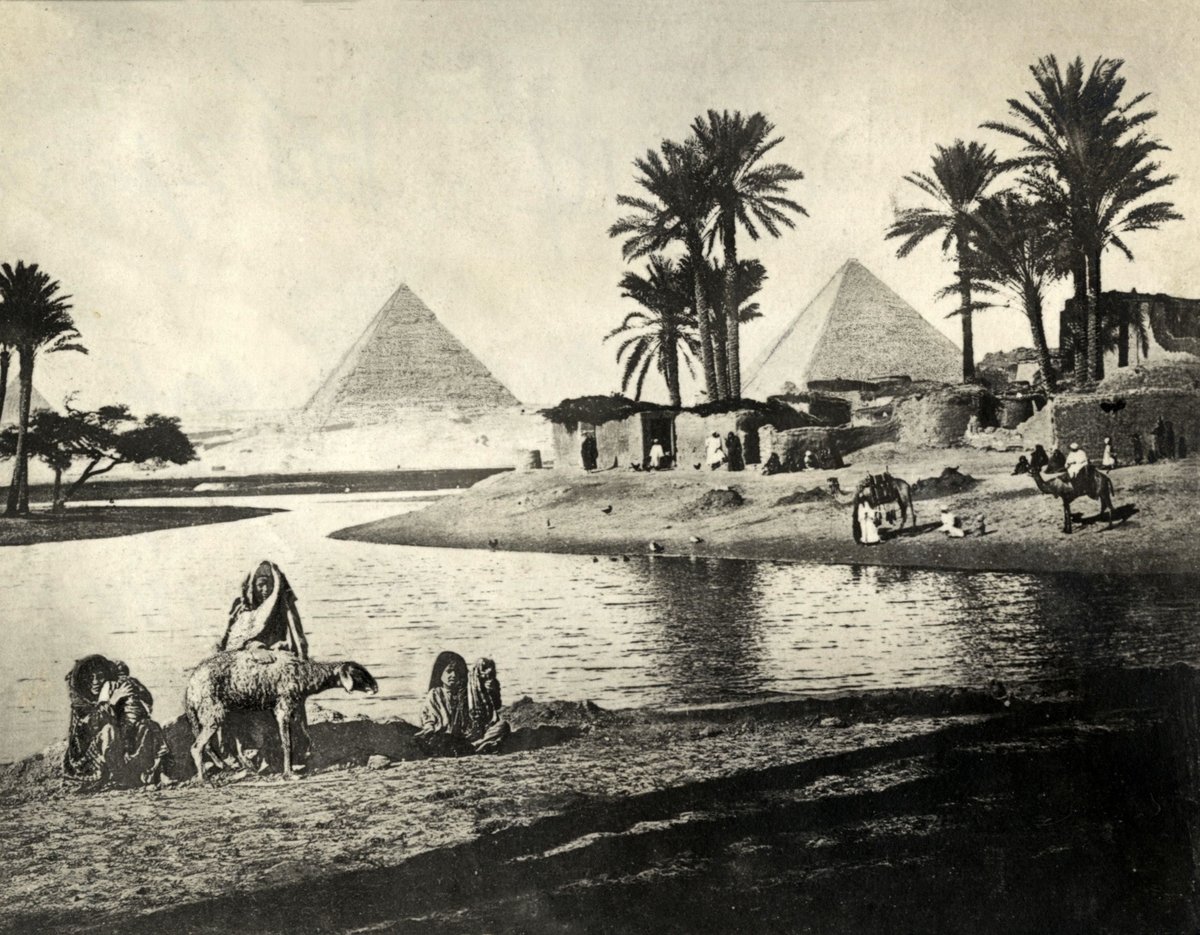
Visiting Hours, Tickets, and Historical Insights of Giza Necropolis in Cairo
Date: 16/07/2024
Introduction
The Giza Necropolis, located on the Giza Plateau near Cairo, Egypt, is one of the most iconic and awe-inspiring archaeological sites in the world. Known for its monumental pyramids and the enigmatic Sphinx, this ancient burial ground dates back to the Fourth Dynasty of the Old Kingdom of Egypt, around 2580–2560 BCE. The necropolis serves as an enduring testament to the architectural prowess, religious beliefs, and cultural significance of ancient Egyptian civilization. Visitors from all over the globe flock to this site to marvel at the grandeur of the Great Pyramid of Khufu, the intricate design of the Pyramid of Khafre, and the smaller yet equally fascinating Pyramid of Menkaure. The Giza Necropolis was not just a burial site but a center of religious and cultural activity, reflecting the ancient Egyptians’ belief in the afterlife and their sophisticated understanding of astronomy and engineering (National Geographic, Smithsonian Magazine). Recent archaeological discoveries have further enriched our understanding of the lives of the workers and the construction techniques used to build these colossal structures. This guide provides a comprehensive overview of the Giza Necropolis, offering insights into its history, cultural significance, and practical information to help you plan an unforgettable visit to this remarkable site.
Table of Contents
- Origins and Early Development
- The Great Pyramid of Khufu
- The Pyramid of Khafre
- The Pyramid of Menkaure
- The Great Sphinx
- Workers’ Village and Construction Techniques
- Religious and Cultural Significance
- Preservation and Modern Challenges
- Recent Discoveries and Research
- Visitor Information
- FAQ
- Conclusion and Call to Action
Exploring Giza Necropolis - History, Visiting Hours, Tickets, and Travel Tips
Origins and Early Development
The Giza Necropolis, located on the Giza Plateau near Cairo, Egypt, is one of the most iconic archaeological sites in the world. The origins of this ancient burial ground date back to the Fourth Dynasty of the Old Kingdom of Egypt, around 2580–2560 BCE. The site is most famous for its three large pyramids, which were constructed as monumental tombs for the pharaohs Khufu, Khafre, and Menkaure.
The Great Pyramid of Khufu
The Great Pyramid of Khufu, also known as the Pyramid of Cheops, is the largest and oldest of the three pyramids at Giza. It was constructed during the reign of Pharaoh Khufu (2589–2566 BCE). Originally standing at 146.6 meters (481 feet), it was the tallest man-made structure in the world for over 3,800 years. The pyramid was built using approximately 2.3 million limestone blocks, each weighing an average of 2.5 tons. The precision of its construction, with its base forming a nearly perfect square, continues to astonish researchers and engineers today (National Geographic).
The Pyramid of Khafre
The second pyramid at Giza was built for Pharaoh Khafre (2558–2532 BCE), the son of Khufu. Although slightly smaller than the Great Pyramid, the Pyramid of Khafre appears taller due to its construction on higher ground and the steeper angle of its sides. The pyramid originally stood at 143.5 meters (471 feet) and is notable for its well-preserved mortuary temple and the Great Sphinx, which is believed to bear the likeness of Khafre himself (Smithsonian Magazine).
The Pyramid of Menkaure
The smallest of the three main pyramids at Giza was built for Pharaoh Menkaure (2532–2503 BCE). Standing at 65 meters (213 feet), the Pyramid of Menkaure is distinguished by its complex of subsidiary pyramids and its use of granite in the lower courses of the structure. Despite its smaller size, the pyramid and its associated temples exhibit a high degree of craftsmanship and architectural innovation (Encyclopaedia Britannica).
The Great Sphinx
The Great Sphinx of Giza, a colossal limestone statue with the body of a lion and the head of a pharaoh, is one of the most enigmatic monuments of ancient Egypt. Carved directly from the bedrock of the Giza Plateau, the Sphinx measures 73 meters (240 feet) in length and 20 meters (66 feet) in height. While the exact date of its construction is debated, it is generally attributed to the reign of Khafre. The Sphinx is thought to symbolize royal power and protection, guarding the Giza Necropolis (History.com).
Workers’ Village and Construction Techniques
Recent archaeological discoveries have shed light on the lives of the workers who built the pyramids. Excavations at the nearby workers’ village have revealed evidence of a well-organized labor force, including housing, bakeries, and medical facilities. Contrary to earlier beliefs that the pyramids were built by slaves, it is now understood that the workforce consisted of skilled laborers who were well-fed and housed. The construction techniques employed, such as the use of ramps and levers, demonstrate the advanced engineering capabilities of the ancient Egyptians (BBC).
Religious and Cultural Significance
The Giza Necropolis was not merely a burial site but also a center of religious and cultural activity. The pyramids and their associated temples were designed to facilitate the pharaohs’ journey to the afterlife, reflecting the ancient Egyptians’ beliefs in immortality and divine kingship. The alignment of the pyramids with celestial bodies, such as the Orion constellation, underscores the importance of astronomy in Egyptian religious practices (NASA).
Preservation and Modern Challenges
The Giza Necropolis has faced numerous challenges over the millennia, including natural erosion, looting, and modern urban encroachment. Efforts to preserve and protect the site have been ongoing since the 19th century, with significant contributions from both Egyptian authorities and international organizations. Modern technology, such as 3D scanning and remote sensing, is being employed to monitor the condition of the monuments and to plan conservation strategies (UNESCO).
Recent Discoveries and Research
Ongoing archaeological research continues to uncover new insights into the history and construction of the Giza Necropolis. Recent discoveries include the identification of additional tombs, artifacts, and inscriptions that provide a deeper understanding of the social and political context of the Old Kingdom. These findings contribute to the ever-evolving narrative of one of the world’s most enduring and fascinating archaeological sites (Egyptian Ministry of Antiquities).
Visitor Information
Giza Necropolis Visiting Hours
The Giza Necropolis is typically open to visitors from 8:00 AM to 5:00 PM daily. During the summer months, the hours may be extended. It is advisable to check the official website or contact the site directly for the most up-to-date information on visiting hours.
Giza Necropolis Tickets
Tickets for the Giza Necropolis can be purchased at the entrance. The general admission fee is approximately 200 EGP (Egyptian Pounds) for adults and 100 EGP for students. Additional tickets are required for entry into the pyramids and the Solar Boat Museum. Discounts are often available for groups and children.
Travel Tips
- Getting There: The Giza Necropolis is located about 20 kilometers southwest of Cairo. Visitors can reach the site by taxi, bus, or organized tour. The nearest metro station is Giza Station, from where you can take a taxi or bus to the plateau.
- Best Time to Visit: The best time to visit is during the cooler months, from October to April, to avoid the extreme heat of the summer.
- What to Bring: Comfortable walking shoes, sunscreen, a hat, and plenty of water are essential. Photography is allowed, but tripods are generally not permitted.
Special Events and Guided Tours
The Giza Necropolis offers various guided tours, ranging from basic site tours to in-depth archaeological explorations. Special events, such as evening sound and light shows, provide a unique perspective on the ancient monuments. It is recommended to book tours and events in advance, particularly during peak tourist seasons.
Photographic Spots
Popular spots for photography include the panoramic viewpoint near the Great Pyramid, the base of the Sphinx, and the higher ground around the Pyramid of Khafre. These locations offer stunning views and are ideal for capturing the grandeur of the site.
FAQ
What are the visiting hours for Giza Necropolis?
The Giza Necropolis is open from 8:00 AM to 5:00 PM daily, with extended hours during the summer.
How much do tickets cost for Giza Necropolis?
General admission is approximately 200 EGP for adults and 100 EGP for students. Additional tickets are required for specific attractions within the site.
Can I take photos at Giza Necropolis?
Yes, photography is allowed, but tripods are generally not permitted.
What is the best time of year to visit Giza Necropolis?
The best time to visit is from October to April, during the cooler months.
Stay Up to Date
For more information and updates, download the Audiala mobile app, check out our other related posts, and follow us on social media.
The Giza Necropolis remains a testament to the ingenuity and spiritual depth of ancient Egyptian civilization, attracting millions of visitors each year who come to marvel at its grandeur and mystery.
Conclusion
The Giza Necropolis stands as a monumental testament to the ingenuity and spiritual depth of ancient Egyptian civilization. From the towering Great Pyramid of Khufu to the enigmatic Sphinx, each structure offers a glimpse into a world that continues to captivate historians, archaeologists, and visitors alike. The site not only reflects the architectural and engineering prowess of the ancient Egyptians but also their profound religious beliefs and cultural practices. Efforts to preserve and protect the Giza Necropolis have been ongoing for centuries, and modern technologies are now playing a crucial role in ensuring its longevity for future generations. Whether you are an avid historian, a casual tourist, or someone simply fascinated by ancient wonders, a visit to the Giza Necropolis promises to be an enriching and awe-inspiring experience. Plan your visit during the cooler months, take advantage of guided tours, and immerse yourself in the history and mystery of one of the world’s most iconic archaeological sites. For more travel tips and updates, download the Audiala mobile app, check out our other related posts, and follow us on social media (UNESCO, BBC).
References
- National Geographic, History, https://www.nationalgeographic.com/history/article/great-pyramid-of-giza
- Smithsonian Magazine, History, https://www.smithsonianmag.com/history/ancient-egypts-great-sphinx-144820264/
- History.com, Ancient History, https://www.history.com/topics/ancient-history/the-sphinx
- Encyclopaedia Britannica, History, https://www.britannica.com/place/Pyramid-of-Menkaure
- BBC, Science & Environment, https://www.bbc.com/news/science-environment-11179721
- NASA, Astronomy, https://www.nasa.gov/feature/goddard/2016/orion-and-the-great-pyramid-of-giza
- UNESCO, World Heritage, https://whc.unesco.org/en/list/86/
- Egyptian Ministry of Antiquities, https://egymonuments.gov.eg/
- The Guardian, Science, https://www.theguardian.com/science/2019/nov/10/archaeologists-unearth-ancient-tomb-of-egyptian-queen
- Nature, Science, https://www.nature.com/articles/d41586-017-07597-1
- World Monuments Fund, https://www.wmf.org/project/giza-plateau
- Archaeology Magazine, https://www.archaeology.org/issues/388-2009/features/8240-giza-plateau-mapping-project
- American Research Center in Egypt, https://www.arce.org/
- BBC History, https://www.bbc.co.uk/history/ancient/egyptians/pyramids_01.shtml
- Ancient History Encyclopedia, https://www.ancient.eu/Giza/
